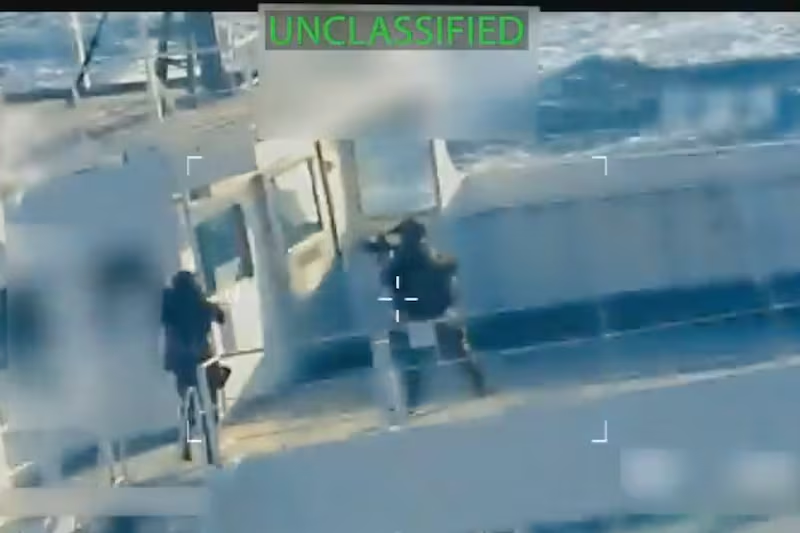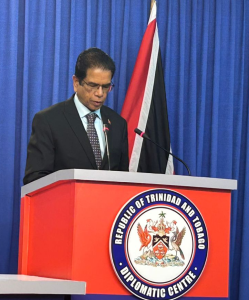By Sue-Ann Wayow
TEN years ago, Caron Asgarali almost died at the hands of a gunman.
She survived.
And has moved on to become a positive influence to many, transforming hurt into hope and using her life as a message and example to others.
Her life changed in 2013, at a cost of approximately $500,000, which she was reminded of last week when Prime Minister Dr Keith Rowley listed out the costs to treat a person with a gunshot wound either victim or perpetrator.
Asgarali said that after reading the AZP News article, she immediately remembered her own situation and a section of one of her books Bounce Back Better in which she addressed the financial setback.
During his opening remarks at the Regional Symposium: Violence as a Public Health Issue – the Crime Challenge, Dr Rowley highlighted the hundreds of thousands of dollars to treat gunshot wounds in the public healthcare system.
Asgarali said that cost was a factor that not many considered when speaking about crime.
In an interview with AZP News, the educator, author, motivational speaker, founder of Project RARE (Raising awareness on the ripple effect of gun violence) shared a deeper part of her story as it related to cost that she had worked out.

“It is mind-blowing,” Asgarali said.
Three weeks at the San Fernando General Hospital including at the Intensive Care Unit (ICU), she estimated her personal cost to be about $250,000 which would not have been spent all at once.
“When you factor in the State into it, the cost reaches in perhaps even more than $500,000 for one little patient with one little injury in addition to so many things,” Asgarali said.
She said, “It is a tremendous cost to the State that people don’t even think about.”
Asgarali said, “When I was there, I had time to look at everything. I had an X-ray machine brought up to me, I did not have to go down to do an X-ray. I had an ambulance take me for a panoramic scan that they (State) paid for, plus others scans that they paid for outside.”
A patient in need of many drugs, special food, equipment and plenty of bandages, she admitted that hospital staff had to keep supplies for her separate as it was scarce at the time.
She added that if she was receiving treatment privately, she would have had to pay for every bandage used as well as every other drug and equipment.
Asgarali said a point that she makes very often is that she was taking up a bed that she did not have to, if she was not shot.
The cost did not also factor in a job replacement for her and the emotional trauma upon her family, friends, neighbours, colleagues and pupils.
Don’t put more guns in the hands of more people
Since that incident, Asgarali has been actively advocating against gun violence through her non profit organisation and programmes.
Emphasising that she is against violence in any form, she said, she could understand why certain measures may have to be taken now, as well as the increased call for the expedition of issuance of Firearm User’s Licence (FUL).
Asgarali said, “I do not agree with putting guns into the hands of more people regardless of what psychological testing they may or may not have gone through because I believe they should, but I don’t think that systems are in place.”
Using the US as an example, according to stats, a large number of firearm incidents involved people with licensed firearms she said.
Asgarali said, “I understand the call for people to want to have firearms as a means of self-defence because we don’t feel protected by the State, but I disagree with making firearms available to everyone. I can’t see us calling for prevention of gun violence and yet providing the ammunition for gun violence.”

Solutions for fighting crime
The number one solution she gave for fighting crime at this stage was proper policing.
“We need proper policing. To me that is one of the key things. We need that to solve crimes. We need to let the criminals know that listen, we are not just about ole talk, that we are about getting things done. You can’t just walk into somebody’s home and take their things that they work so hard for and have people living in fear.”
With corruption at all levels, Asgarali said the work of the police may be deemed ineffective.
“Crime needs to be uprooted at all levels, yes we can trim the treetops but if the tree is infected , you have to get to the source,” she said.
Another solution is through public education.
Over the years, while not directly, there have been many groups through their work with youths, were targeting communities (hot spots), offering programmes and opportunities and an alternative to a life of crime.
“But those groups are not given the right amount of incentive and encouragement and support that they need in order for these things to work,” Asgarali said.
Speaking about herself, she said, “It has been fighting like the salmon going against the tide, trying to make any kind of headway in terms of fighting against gun violence.”
These groups do not necessarily have to operate in silos but could work together with State support to really make a dent in criminal activity by young people.
Asgarali said, “Everybody is calling to get things done and yes the State has to do things, but we also have a responsibility for our state that we are in. If you look at my videos and you look at videos with absolute nonsense and you compare the views, you will see what is important to our population.”
With the public health approach to violence, she thinks that it would mean a lot more pressure would be placed on the Ministry of Health, given the definition of what a public health issue is.
All sectors needed to work together including spiritual, social and judicial for measures against crime to work.
“It must get down to the community level. Statistics show internationally that where the changes take place, where they are most effective is with the young people. We must make sure we lay the foundation for the young people,” Asgarali said.
“Our young people look to the elders, if the elders are not living what they preaching, what are we really doing,” she added.
More parenting programmes were also needed.
Asgarali gave her opinion on the suggestion of no bail for murder charged and the enforcement of the death penalty made at the symposium.
She said, “I like the idea on bail for murder charged. I am really against violence in all forms so the death penalty does not agree with me but however, we at a stage where drastic measures are needed and perhaps if that is what we have to do to rein in the country until such time giving such programmes time to kick in then yes.”
Additionally, men were calling the shots from inside the prison walls.
Asgarali said, “Because crime has spiralled out of controlled, we have no choice but to inject money into treating the situation as it is but ideally, I think we should be having more resources in the prevention aspect of it.

“I see money wasted in so many different ways in this country that could be diverted… Instead of it going into people’s pockets and people making their bank accounts better and making sure that family for generations to come are covered, I think they should see about our people here.”
With she little faith in the outcomes of the symposium, she has confidence in the involvement of Prime Minister of Barbados Mia Mottley.
“I am very happy that she is on board with it and I would like to think that if she is involved, changes are going to take place,” Asgarali said.
She said, “I want to remain optimistic and have hope because as a Christian I will always have hope, and I would like to hope that this works. But if it doesn’t, I as an NGO and I would like to think that most of the NGOs feel the same way, regardless of what happens out of that, we are going to keep working and in terms of that there will always be hope.”
When asked about the promised projection of a reduction in violent crimes by June made by Commissioner of Police Erla Harewood-Christopher, she said, she thought the CoP was a bit too “overly optimistic.”
Asgarali said, “I would like to think it could happen but based on all the evidence that we have at this point in time, I can’t see her meeting that goal.”
![]()













